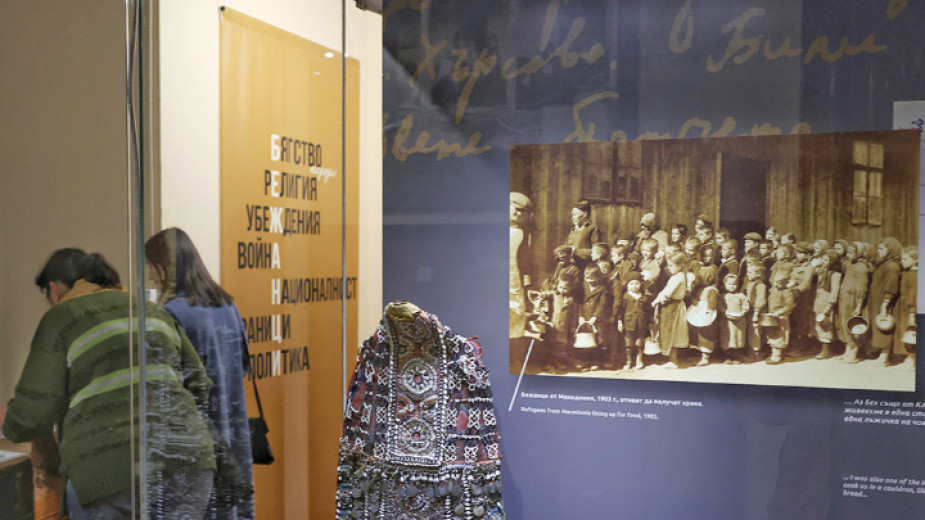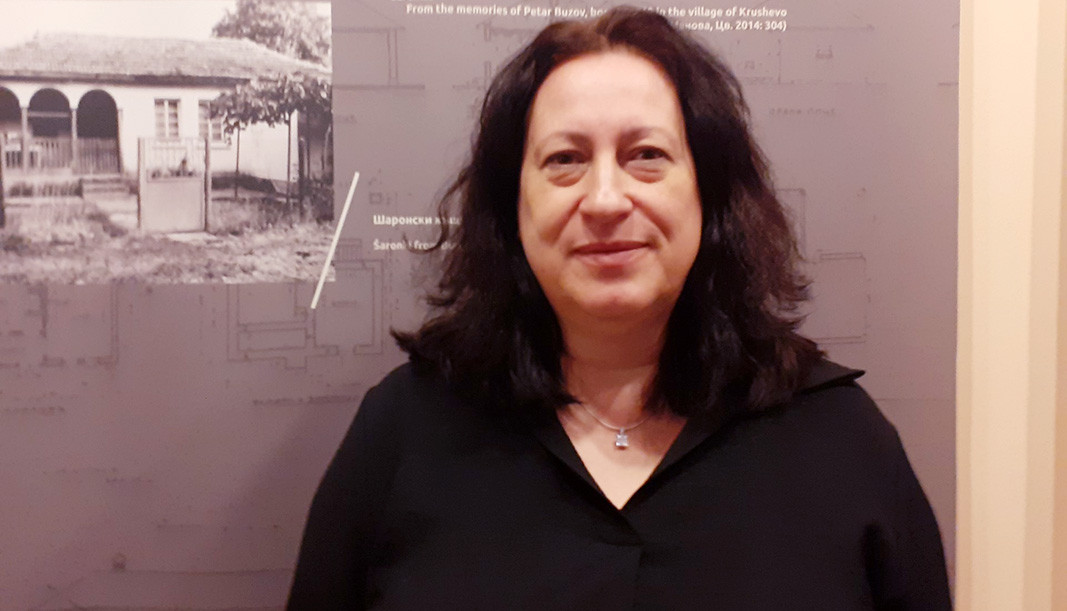 10
10
Having to flee one’s home and country and take the long road to an uncertain future – that is what refugees have invariably faced through the years, and for the same reasons. People have to flee because of war or their religious beliefs, their nationality or new state borders, because of state policy or their political views.
The exhibition Refugees at the National Ethnographic Museum in Sofia presents the long history of people’s search for a safe haven and a new life. Even though the occasion to mount the exhibition is the 120th anniversary of the Ilinden-Preobrazhenie uprising of 1903, it shows a different face of the heroic events connected with the Bulgarians’ liberation struggles.
The resettlement of refugees is connected with a lot of pain and trauma, leaving an imprint on the histories of families for generations. The life and the suffering of refugees is presented in archive photographs, showing their faces, and the caravans of people carrying all their worldly possessions with them. Along the way they usually lost them, sometimes – they lost their lives. 
“The exhibition also deals with how these refugees were treated at their new place of abode, not forgetting that the 20th century has been dubbed the century of refugees – because there have been so many migrant waves,” says Dr. Milena Katosheva from the National Ethnographic Museum who is curator of the exhibition.
“When the refugees settled elsewhere, they brought the toponyms of their towns and villages with them. That was how there appeared streets in Sofia with names like Prilep, Ochrid, Drin, Dame Gruev Blvd., Mara Buneva etc. The exhibition includes photographs of such places in Sofia, but also in Plovdiv, in Burgas. One item worth seeing is a map showing all refugee flows headed for inland Bulgaria. It shows there were people from all lands left outside the bounds of Bulgaria after the wars. 
The first refugees left after the Russo-Turkish war, followed by waves of refugees in 1913 and in 1922. We traced latter-day descendants of refugees to tell us what their parents remember from their time as refugees. In the video halls visitors can find out about the stories of these families, first hand.”
On the whole, the locals were not particularly welcoming of the refugees, Dr. Milena Katosheva says. “The incoming waves of new people who had nowhere to live, were regarded by the local community as a problem. For example, heartwrenching stories have come down to us of refugees living in the outskirts of the town without a roof over their heads.
And as winter set in, they would make dugouts where they would shelter, together with the animals they had left. “It was really hard, and it was years before the government took any notice of their problem. Refugee loans and land was arranged for them, but that took place a long time after they came here,” Dr. Katosheva says.
“We focus especially on the charity work at the time. A designated part of the exhibition is dedicated to the work of entrepreneur Alexander Georgiev-Kodzhakafaliyata, dubbed “the father of Burgas”. He donated a lot of land, and it was thanks to him a whole new neighbourhood was built of refugees from the region of Edirne. There is a section of the exhibition dedicated to Pierce O'Mahony, a philanthropist and a prominent supporter of Bulgaria. He arrived in Sofia in 1903, and together with his wife, set up the St. Patrick’s orphanage for orphaned children from Macedonia and Eastern Thrace. These children were later adopted by Pierce O'Mahony, took his name and received a solid education. 
Some of these children went on to become prominent names at the turn of the 20th century – doctors, army men, scientists, lawyers. The exhibition features the uniforms of some of the adopted O'Mahony children, which resemble national costumes from Debar (today in North Macedonia). Upon their graduation, each child from the orphanage was given a suitcase called “father Pierce suitcase”, with everything they will need – two changes of clothes and shoes, to give them a start in life.”
Translated and posted by Milena Daynova
Photos: Gergana Mancheva, BTA
The newest exhibition at the National Museum of Military History in Sofia, 'War and the Creatives: A Journey Through Darkness' opens today, offering free entry as a gesture to those who were unable to visit during the recent renovations. Rather than..
A 5,000-year-long history lies hidden in the ruins of the medieval fortress “Ryahovets” near the town of Gorna Oryahovitsa where active excavations began ten years ago. On this occasion, on November 17, the Historical Museum in Gorna Oryahovitsa..
Just days ago, archaeologists uncovered part of the complex underground infrastructure that once served the Roman baths of Ratiaria - one of the most important ancient cities in Bulgaria’s northwest. Founded in the 1st century in the area of..
The newest exhibition at the National Museum of Military History in Sofia, 'War and the Creatives: A Journey Through Darkness' opens today, offering free..

+359 2 9336 661
